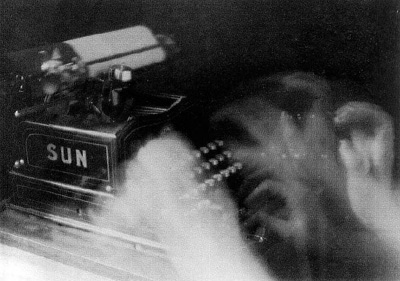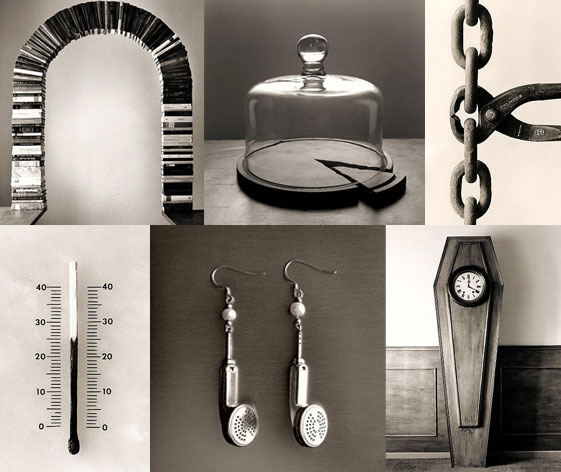 [BRAGAGLIA]
[BRAGAGLIA] I find that Bragaglias' use of time is really interesting, especially in the medium of photography. Considering they were shooting in the early 1900s, their choice to focus on typing, which is still a very common activity, makes a statement that is way beyond their time.

 [MAN RAY]
[MAN RAY]Man Ray's surrealist/dadaist influences make his brand of photography very admirable. I love his use of the face with the contrast of harsh, hard materials. They make very strong statements within the context of the photographs. The first seems to be mocking the possibility of sorrow, emotion, and the therapeutic value of crying. The subjects heavy mascara and perfect tear drops makes this photograph particularly shocking.
Similarly, the subject of the second picture makes a strong impact on the viewer with the high contrast between skin color, lip color, and mask color, highlighted by the shadows and lighting. Besides all the technical details, there is a certain expression in this girls face. Her closed eyes and pursed lips so closely resemble the mask she is holding that it all seems unreal.

















 [LYDIA PANAS/ PORTRAIT OF A YOUNG MAN]
[LYDIA PANAS/ PORTRAIT OF A YOUNG MAN]


 [MAN RAY]
[MAN RAY]